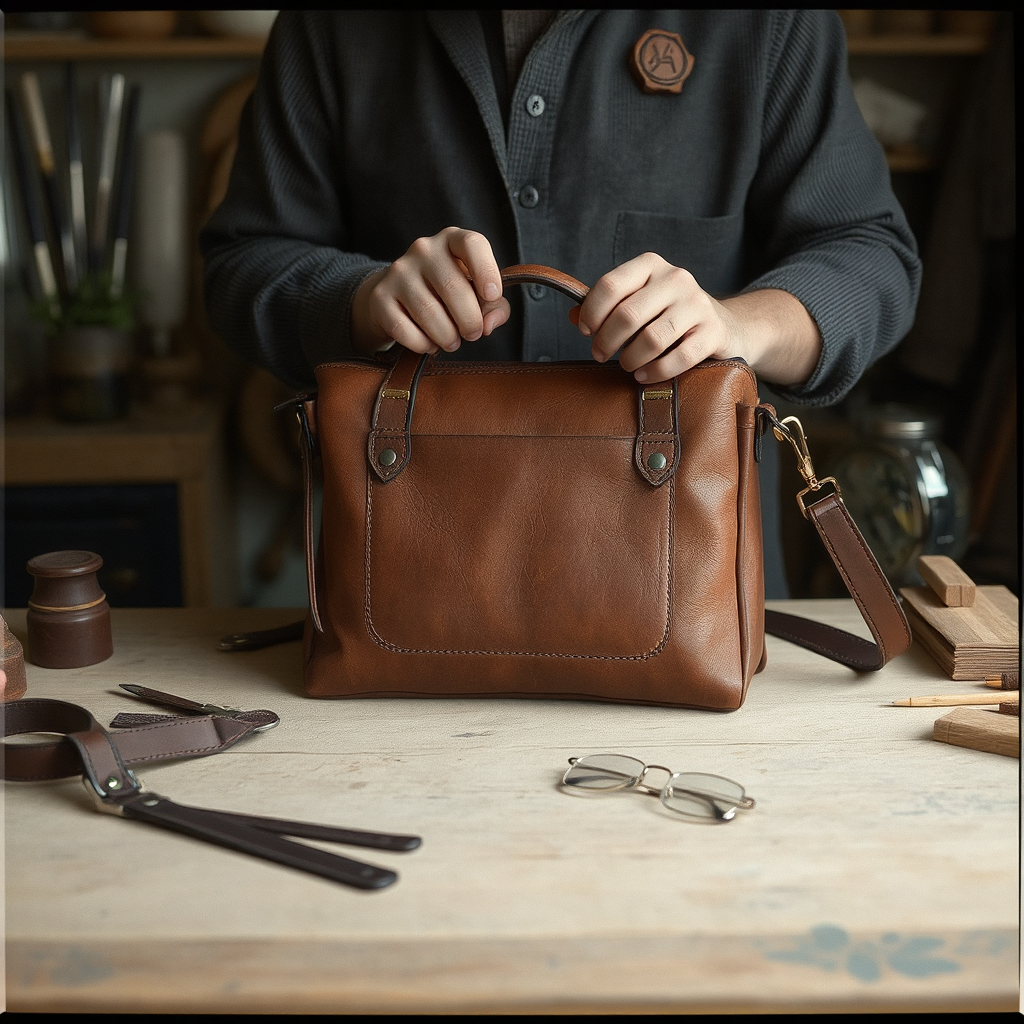
The Timeless Craft: The History of Handcrafted Genuine Leather Bag Artisans in Anatolia
Share
A Legacy Carved in Leather
Anatolia, known as the "cradle of civilizations," holds a deep-rooted history in leather craftsmanship that stretches back thousands of years. This timeless art began as a necessity and evolved into a refined tradition that carries the essence of the region's cultural heritage. From ancient times to modern-day ateliers, leather artisans in Anatolia continue to preserve their authentic manufacturing techniques, blending functionality with artistry.
The Origins of Leather Craftsmanship in Anatolia
The history of leatherwork in Anatolia dates back to prehistoric times when early inhabitants relied on animal hides for clothing, shelter, and protection. The advent of leather tanning techniques, believed to have emerged around 2000 BCE, marked a turning point. Anatolia's central location between Europe and Asia facilitated the exchange of knowledge and materials, enabling its leather craftsmanship to flourish.
By the time of the Hittites and Phrygians (around 1500 BCE), leather production had become an established trade, with artisans crafting items such as bags, sandals, and protective armor. During the Byzantine and Ottoman periods, the art of leatherwork reached its zenith. The Ottomans, in particular, elevated leatherworking into a sophisticated craft, with the production of finely crafted bags, belts, and other accessories.
Development and Evolution
The leather industry in Anatolia developed alongside advances in trade and agriculture. Cities such as Istanbul, Bursa, and Afyonkarahisar emerged as centers for leather tanning and manufacturing. Bursa, the former Ottoman capital, became synonymous with high-quality leather goods. The region's access to natural resources, including water and oak bark for tanning, allowed leather artisans to perfect their techniques.
During the Ottoman era, leatherworking guilds were established to regulate quality, protect artisans' rights, and train apprentices. These guilds passed down tanning and crafting techniques through generations, preserving the authenticity of the craft.
The Leather Tanning Process
Traditional leather production in Anatolia involves several meticulous steps:
- Preparation of Hides: Raw hides are cleaned, salted, and soaked to remove impurities.
- Tanning: Vegetable tanning, using oak bark or valonia, has been a hallmark of Anatolian craftsmanship. This eco-friendly method enhances durability while maintaining a natural look.
- Dyeing and Finishing: Artisans use natural dyes and oils to give leather its signature hues and textures.
- Crafting: Skilled artisans hand-cut, stitch, and assemble each bag, ensuring every piece is unique.
Cities Leading in Leather History
Several cities in Anatolia have been pivotal in shaping its leather heritage:
- Bursa: Renowned for its high-quality leather tanning and fine craftsmanship, Bursa is a hub for traditional techniques.
- Istanbul: As a major trade center, Istanbul has long been a market for leather goods, with a vibrant artisan community.
- Afyonkarahisar: Known for its artisanal tanneries, Afyon has played a key role in producing vegetable-tanned leather.
- Uşak: Famous for its leather carpets and accessories, Uşak has contributed to Anatolia's leather legacy.
Modern-Day Artisans and Ateliers
Despite industrialization, Anatolia's leather artisans remain committed to their heritage. Small ateliers in cities like Gaziantep and Kayseri continue to use time-honored techniques, crafting genuine leather bags that reflect the region's rich cultural identity. These artisans emphasize quality over quantity, ensuring that every bag tells a story of tradition and craftsmanship.
A Heritage Worth Preserving
The art of handcrafted leather bags in Anatolia is more than a trade – it is a legacy that connects the past to the present. By supporting these artisans and their ateliers, we honor their dedication to preserving authenticity and keeping the spirit of Anatolian craftsmanship alive.
